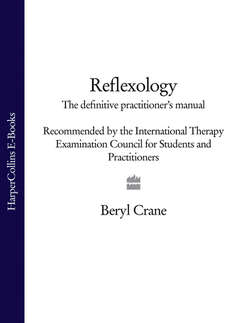Читать книгу Reflexology: The Definitive Practitioner's Manual: Recommended by the International Therapy Examination Council for Students and Practitoners - Beryl Crane - Страница 33
The Heart meridian
ОглавлениеThe Heart meridian (figure 2.12) is a Yin channel with nine points. It originates at the heart to the medial side of the upper limbs near the axillary area and then descends to the paired organ, the small intestine. There is an offshoot from the heart to the oesophagus, which then ascends to just below the eye. The principal channel ascends from the heart to the lungs, to the axillary area, and follows a line down the ulnar side of the arm to the wrist between the carpals (capitate bone) between the fourth and fifth metacarpals on the palmar side to the little finger; here it terminates at the medial side of the nail bed of the little finger. This channel connects directly with the lung and the kidneys.
Figure 2.12 The Heart meridian (the dotted line shows how it communicates with its paired organ the small intestine)
The nerve line is along the intercostobrachial nerve, the radial, ulnar, and the median nerve and its branches, also the palmar digital nerve.
Disorders of this meridian, with signs and symptoms, include: headaches, hysteria, insomnia, mild psychiatric problems, disturbing dreams, depressions or anxiety; problems of the tongue such as glossitis, toothache; all arm and wrist pain; chest, respiratory and breast disorders, angina, mild heart problems, irregular heart beat, palpitations; uterine disorders, dysmenorrhoea.
Note. If you suspect any heart disorder, never treat yourself. Seek help first from your medical practitioner. If they are happy that you receive reflexology, this will have a wonderful calming action on the heart.
